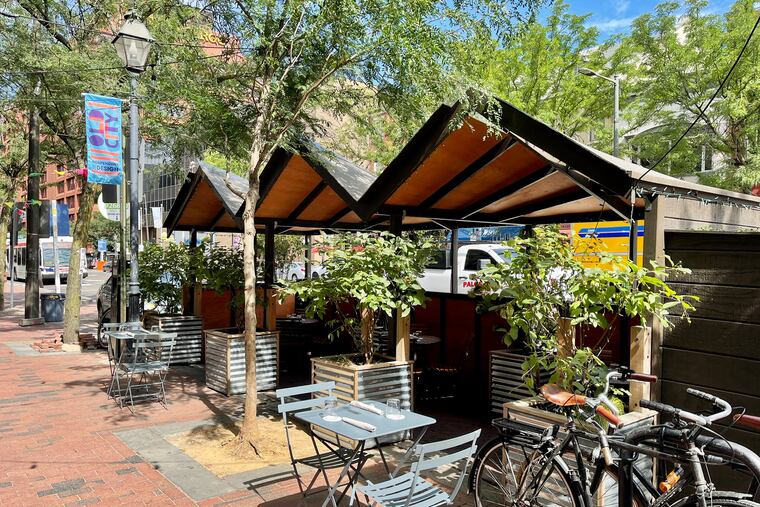Philly restaurants can now officially apply for streetery licenses this week
The city is offering a grace period to obtain a license until Jan. 9.

Philadelphia restaurants starting Tuesday can finally apply for licenses to operate “streeteries” under the city’s revamped outdoor dining program.
When officials announced new regulations to govern streeteries in March, they were met with pushback from restaurant owners who said the rules would gut the city’s thriving al fresco dining scene and hurt businesses as they bounce back from the pandemic.
After months of negotiations, the Streets Department last month unveiled the Outdoor Dining Program. The finalized requirements to obtain a streetery license include securing a $1 million in comprehensive general liability insurance and paying a license fee of $1,750, among other criteria.
The regulations are now in effect, but enforcement of streetery licenses will not begin until at least Jan. 9, officials said.
The application process begins online. Restaurant owners are required to submit photos and building plans for the site of the streetery, among other documentation. A nonrefundable $200 application fee will be put toward the annual license cost, if the application is approved.
While some restaurateurs have blasted the regulations as inequitable, Streets Commissioner Carlton Williams hailed the new system as “a more streamlined process” that will expand outdoor dining to neighborhoods beyond the city’s core.
“The permanent outdoor dining program provides an opportunity for parts of the city that seldom provided outdoor dining options to now do so in a cohesive and safe way,” Williams said in a statement.
The new program comes nearly three years after pandemic shutdowns led the city to roll back red tape and allow restaurants to commandeer parking spaces to expand outdoor dining. The move gave birth to a renaissance of street life in the city. But complaints about bad actors building unsafe roadside dining structures — and the perennial debate over parking spaces — turned the issue into a drawn-out political battle.
City councilmembers and Mayor Jim Kenney’s administration began working to standardize the fleet of pop-ups that spread from Center City to outlying neighborhoods. Council’s decision to carve out by-right streetery zones drew ire throughout the industry. An Inquirer analysis in December found dozens of restaurants were excluded from the boundaries by roughly a block or less.
» READ MORE: Hundreds of restaurants got excluded by Philly’s new ‘streetery’ zones — some by less than a block
Those zones remain intact under the final program, and restaurants outside the by-right boundaries will have to jump through extra hoops to get support from their district councilmember to obtain a license.
All restaurants must apply for annual licenses regardless of where they are located. Once applications are received, the Streets Department will inspect all streeteries to ensure they’re in line with the new regulations.
Licensing requirements differ depending on the type of streetery. Only enclosed structures will require building permits and approval by the Philadelphia Art Commission, while those built without structures right on the street or on raised platforms do not.
Officials said they will publish ongoing updates to the program online.